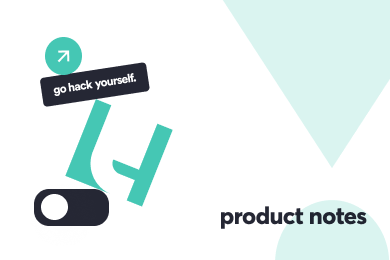Security | Threat Detection | Cyberattacks | DevSecOps | Compliance
Security
Video Verification API: The Technology Behind Video KYC
Video KYC (Know Your Customer) is a process for customer Identity verification using remote video technology. It is a secure and efficient way for financial institutions, online businesses, and other organizations to verify the identity of their customers without requiring them to physically visit a branch or office.
Major improvement to web crawling, more customization, and new tests
Many security teams have thousands – if not hundreds of thousands! – of known assets and unknown assets that they continuously monitor for vulnerabilities and risks. Viewing large volumes of assets can be cumbersome, particularly when observing a specific characteristic of an asset, such as the technologies it’s hosting or its DNS record type. That’s why we’re adding additional customization to the All Asset view.
CISO Interview Series: Brian Haugli
It’s a rare treat when you get the opportunity to speak with someone who has worked as an ethical hacker, has also worked in top secret military settings, and then transferred to the private sector, rising to the highest cybersecurity level in the corporate chain. We had the opportunity to speak with Brian Haugli, CEO of SideChannel. Brian is also the author of a book about the NIST Cybersecurity Framework.
Network Security Threats and Defenses: A 2023 Guide
Network security is a broad field, encompassing various processes, policies, rules, standards, frameworks, software, and hardware solutions. Its primary goal is to protect a network and its data from various threats, including intrusions and breaches.
Code Signing Certificate: Best Way to Protect Android and iOS Apps?
The increase in the usage of smartphones is the reason why android development has been on the rise these days. The number of smartphones has surpassed all our imagination and expectations. Two operating systems that have been the most dominant are the android operating system and iOS because millions and billions of people love them because of both Android and iOS apps. Incidents of security breaches have become so common with the ever-increasing use of both these apps.
Application Security Requires Concerted, Continuous Efforts
According to Forrester Research, applications are the top cause of external breaches because cybercriminals consider them to be one of the easiest entry points to attack organizations’ code bases. As supply chain attacks increase, it has become increasingly important for organizations to implement and maintain a continuous application security program and make it a priority.
Yandex Data Leak Triggers Malicious Package Publication
It would be big news, to say the least, if a large quantity of Google source code found its way into the public domain. Now imagine if the leak also included source code from Amazon and Uber. That’s the scale of the data leak that hit Russian tech giant Yandex. The risk here is that malicious actors could analyze the leaked code and discover exploitable security gaps.
How to Build a Solid Incident Response Team
In today's increasingly digitized world, nearly every aspect of our personal and corporate lives is connected to the internet, making cyber security an essential component of ensuring the safety and security of our organizations and all of our professional activities. One of the most important steps you can take to protect your organization's cybersecurity posture and respond to incidents quickly and effectively is creating a solid cybersecurity incident response team.
Understanding the Incident Response Life Cycle
With the growing digitalization of businesses, the threat of cyber-attacks has become a reality for organizations of all sizes. It's vital for companies to be aware and proactive in understanding how to detect, respond to, and recover from cyber-attacks as technology becomes increasingly integrated into daily business operations.










